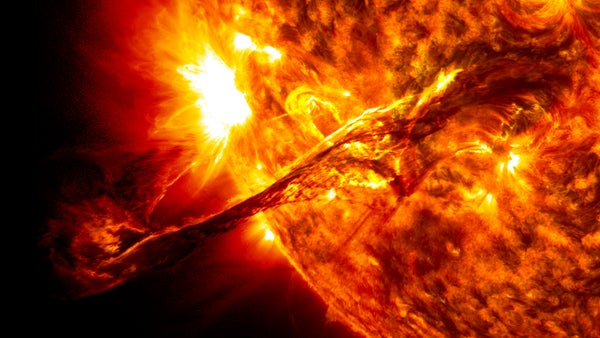Sunlight-Dimming Climate Schemes Need Worldwide Oversight
As the climate crisis intensifies, experiments to “cool the planet” by reflecting solar radiation proliferate. Without proper global and national regulation, they will worsen the crisis
NASA/SDO/AIA/Goddard Space Flight Center
Deliberately reflecting sunlight into space to cool the planet—solar radiation modification (SRM)—is now under serious exploration/investigation as a solution to the climate crisis. In theory, firing sulfur droplets into the stratosphere, spraying salty water into clouds, or scattering glass over polar ice could slow global warming. But as these experiments involve risks at a planetary scale, we should proceed with abundant caution, communication and transparency, regulated by globally agreed standards. Instead, we see ethical and legal boundaries being crossed by unregulated experiments.
Over the past decade, influential institutions—Harvard University, the University of Washington and a four-university partnership in the U.K. that includes the University of Oxford—have come close to conducting outdoor SRM experiments. But these initiatives ended up pausing their work following reconsideration of the scientific and political risks and pushback from local activists. Yet some groups involved in solar deflection experiments have recklessly opted to move their projects away from academic oversight.
Since 2017, a private initiative, initially called Ice911 Research and later the Arctic Ice Project, has scattered tiny glass spheres to reflect sunlight over 17,500 square meters (or three football fields) of Arctic ice], drawing protests from Alaskan Native leaders. Full deployment would involve spheres over up to 100,000 square kilometers of the Arctic, an area the size of Kentucky. More recent experiments only exceed this disregard. In 2022, an independent researcher in the U.K. released sulfur dioxide from a high-altitude weather…
Read the full article here







